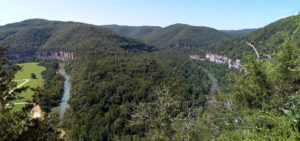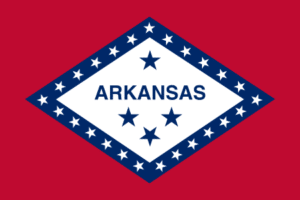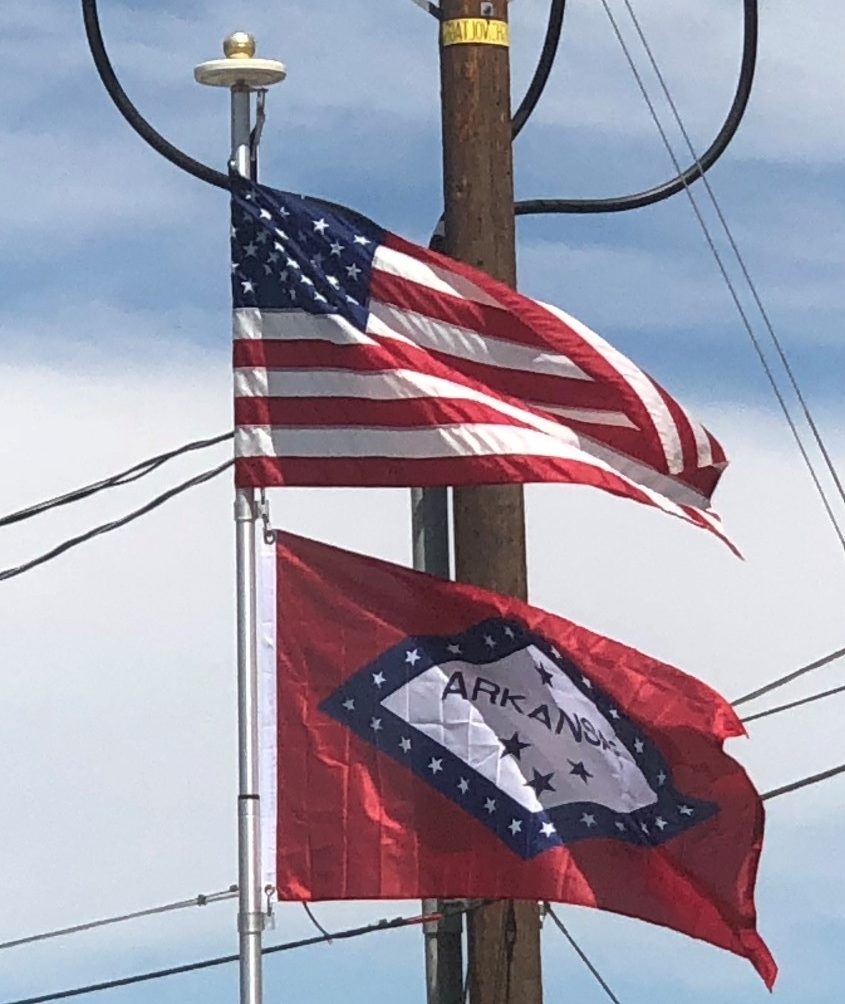Tourism is also very important to the Arkansas economy. The state maintains 52 state parks and the National Park Service maintains seven properties in Arkansas.

The completion of the William Jefferson Clinton Presidential Library in Little Rock has drawn many visitors to the city and revitalized the nearby River Market District. Many cities also hold festivals, which draw tourists to Arkansas culture, such as The Bradley County Pink Tomato Festival in Warren, King Biscuit Blues Festival, Ozark Folk Festival, Toad Suck Daze, and Tontitown Grape Festival.
Transportation:
Several main corridors pass through Little Rock, including Interstate 30 (I-30) and I-40. In northeast Arkansas, I-55 travels north from Memphis to Missouri, with a new spur to Jonesboro. Northwest Arkansas is served by I-540 from Fort Smith to Bella Vista, which is a segment of future I-49.

The Texas Eagle, an Amtrak passenger train, serves five stations in the state Walnut Ridge, Little Rock, Malvern, Arkadelphia, and Texarkana.
Arkansas also benefits from the use of its rivers for commerce. The Mississippi River and Arkansas River are both major rivers. The United States Army Corps of Engineers maintains the McClellan-Kerr Arkansas River Navigation System, allowing barge traffic up the Arkansas River to the Port of Catoosa in Tulsa, Oklahoma.
There are four airports with commercial service: Clinton National Airport, Northwest Arkansas Regional Airport, Fort Smith Regional Airport, and Texarkana Regional Airport.

Flag of Arkansas:
The flag of Arkansas, also known as the Arkansas flag, consists of a red field charged with a large blue-bordered white lozenge. Twenty-nine five-pointed stars appear on the flag: twenty-five small white stars within the blue border, and four larger blue stars in the white diamond. The inscription “ARKANSAS” appears in blue within the white lozenge, with one star above and three stars below. The star above and the two outer stars below point upwards; the inner star below points downwards. The flag was designed by Willie Hocker of Jefferson County, a member of the Pine Bluff Chapter, Daughters of the American Revolution (DAR).

Around 1912, the Pine Bluff Chapter of the DAR wished to present a state flag for the commissioning of the battleship USS Arkansas. When it was discovered that Arkansas did not have a state flag, the DAR chapter decided to sponsor a contest to design a flag. Hocker, a member of the Pine Bluff DAR chapter, won with a design that is similar to the current flag. She designed the flag with three blue stars in the middle of the white diamond and omitted “ARKANSAS”. At the request of the flag committee, chaired by Secretary of State Earle Hodges, Hocker added “ARKANSAS” and rearranged the stars to one on top and two on bottom. This flag was adopted by the legislature on February 26, 1913.
In 1923, the legislature added a fourth star, representing the Confederate States of America. This fourth star was originally placed so that there were two stars above the state name and two below; this was to include the Confederacy alongside Spain, France, and the United States. Since this disturbed the other two meanings of the original three stars, the legislature corrected this in 1924 by placing the Confederate star above “ARKANSAS” and the original three stars below it, as it is today. The 1924 design was confirmed as law in 1987 by Act 116, signed by Bill Clinton.
